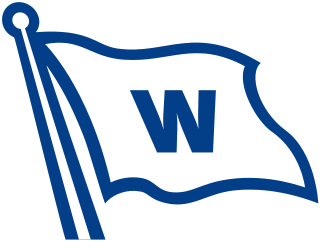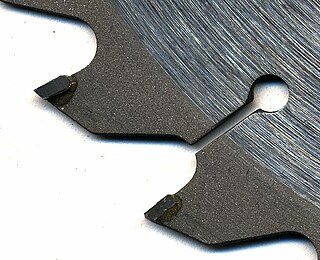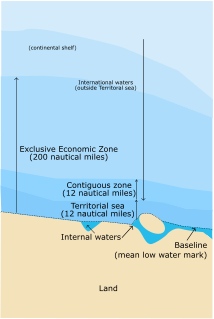
A shipwreck is the remains of a ship that has wrecked, which are found either beached on land or sunken to the bottom of a body of water. Shipwrecking may be deliberate or accidental. In January 1999, Angela Croome estimated that there have been about three million shipwrecks worldwide.
Marine salvage is the process of recovering a ship and its cargo after a shipwreck or other maritime casualty. Salvage may encompass towing, re-floating a vessel, or effecting repairs to a ship. Today, protecting the coastal environment from spillage of oil or other contaminants is a high priority. Before the invention of radio, salvage services would be given to a stricken vessel by any ship that happened to be passing by. Nowadays, most salvage is carried out by specialist salvage firms with dedicated crew and equipment.
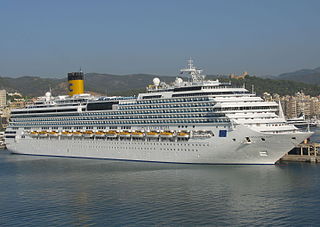
Costa Concordia was a Concordia-class cruise ship built in 2004 by the Fincantieri's Sestri Ponente yards in Italy and operated from 2005 until 2012 by the Costa Crociere subsidiary of Carnival Corporation. It was wrecked off the coast of Isola del Giglio in Italy on 13 January 2012 due to a collision with a submerged rock; the ship capsized hours later and was subsequently declared a total loss. The ship's captain Francesco Schettino was found guilty of manslaughter, causing a maritime accident, and abandoning ship. The wreck was salvaged and then towed to the port of Genoa where scrapping operations began. The name Concordia was intended to express the wish for "continuing harmony, unity, and peace between European nations."
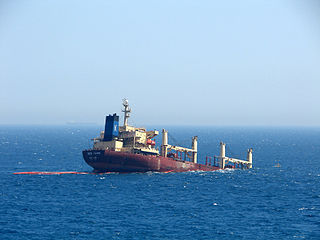
MV New Flame was a Panamanian bulk-carrier cargo ship. It collided with an oil tanker off Europa Point, the southernmost tip of Gibraltar on 12 August 2007, and ended up partially submerged in the Strait of Gibraltar. The vessel broke into two in December 2007 amid numerous unsuccessful recovery efforts. The cargo was salvaged and the stern section removed for scrap. Following the crew's rescue, the captain was arrested for having departed without authorisation. Charges of endangering shipping were later dropped.
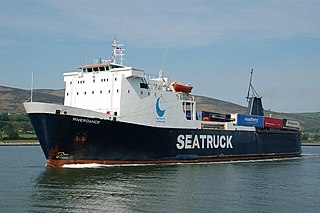
Riverdance was a RORO ferry in service with Seatruck Ferries on the Irish Sea. On 31 January 2008 she was hit by a wave that caused her cargo to shift and she beached at Blackpool, very close to the boundary with Cleveleys. Attempts to refloat her failed, and she was scrapped on site during 2008.

MV Taiko is a roll-on/roll-off (RoRo) freighter managed by the Norwegian-Swedish shipping line Wallenius Wilhelmsen Logistics. She was built as Barber Hector by Hyundai Heavy Industries at Ulsan, South Korea in 1984 for Blue Funnel Line, part of the Liverpool company Ocean Transport & Trading Ltd, and was Blue Funnel's last newbuilding. She was deployed on Barber Blue Sea Line, a joint venture between Blue Funnel, Wilh. Wilhelmsen, Oslo and the Broström Group of Sweden. In 1988 Ocean withdrew from Barber Blue Sea line and Barber Hector was sold to the Swedish partner, chartered to Wilhelmsen and renamed Taiko. Wilhelmsen purchased the vessel in 1993.
Risdon Archibald Beazley (1904–1979) was the founder of Risdon Beazley Ltd, a Marine salvage company that operated from 1926 to 1981 in Southampton, England.
Angeln was a container ship which was built in 2004. She capsized and sank off Saint Lucia in February 2010.
Dredging, Environmental and Marine Engineering NV (DEME) is an international group of specialised companies in the field of capital and maintenance dredging, land reclamation, port infrastructure development, offshore related services for the oil & gas industry, farshore windfarm installation, environmental remediation a.o. The group is based in Zwijndrecht, Belgium, and has current operations on the five continents. The roots of the group date back to the mid 19th century. DEME is committed to the practice of sustainable development. In 2009, the Flemish government agency Flanders Investment and Trade awarded the Export Lion 2009 to DEME for what was called its 'sustainable strategy of internationalization' and 'the many prestigious assignments carried out worldwide'. In a survey by temporary employment company Randstad Holding of 12,000 Belgians in early 2010 DEME was proclaimed one of the most attractive employers in Belgium.

On 13 January 2012, the Italian cruise ship Costa Concordia ran aground and overturned after striking an underwater rock off Isola del Giglio, Tuscany, resulting in 32 deaths. The eight year old Costa Cruises vessel was on the first leg of a cruise around the Mediterranean Sea when she deviated from her planned route at the Isola del Giglio, sailed closer to the island, and struck a rock formation on the sea floor. A six-hour rescue effort brought most of the passengers ashore.

MV Canadian Miner was a Canadian laker that was part of the fleet of Upper Lakes Shipping from 1994–2011. Initially constructed as Maplecliffe Hall in 1966, the ship was renamed Lemoyne in 1988 before becoming Canadian Miner in 1994. In 2011, the name was shortened to just Miner. In 2011 the vessel was taken out of service and sold for scrapping. While en route to the scrapyard in Turkey, the ship ran aground off Nova Scotia in 2011. The vessel was broken up in 2014 in Nova Scotia.

MV Tønsberg is a roll-on/roll-off ship owned by Wilh. Wilhelmsen. As of 2012 it is the largest RORO ship in the world.

MV Baltic Ace was a Bahamian-flagged car carrier that sank in the North Sea on 5 December 2012 after a collision with the Cyprus-registered container ship Corvus J. Built by Stocznia Gdynia in Poland, the ship had been in service since 2007.

Parbuckle salvage, or parbuckling, is the righting of a sunken vessel using rotational leverage. A common operation with smaller watercraft, parbuckling is also employed to right large vessels. In 1943 USS Oklahoma was rotated nearly 180 degrees to upright after being sunk in the attack on Pearl Harbor, and the Italian cruise ship Costa Concordia was successfully parbuckled off the west coast of Italy in September 2013, the largest salvage operation of that kind to date.
Asian Hercules II is a floating sheerleg crane vessel owned and operated by Asian Lift (Smit Singapore Pty ltd and Keppel Fels.

EUKOR Car Carriers is a specialised Roll-on/roll-off shipping line formed in 2002. The company's main business is the sea carriage of new and used cars and High and Heavy cargo.
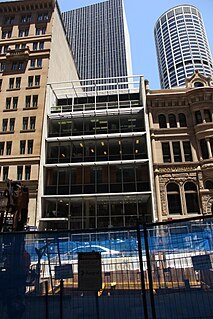
Liner House is a heritage-listed office building located at 13-15 Bridge Street, in the Sydney central business district, in the City of Sydney local government area of New South Wales, Australia. It was designed by Bunning and Madden and built from 1959 to 1960. It is also known as Moran House. It houses a restaurant and the Moran Arts Foundation on its lower floors. It was added to the New South Wales State Heritage Register on 2 April 1999.



